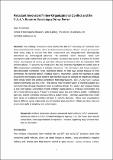Reluctant innovators? : inter-organizational conflict and the U.S.A.’s route to becoming a drone power
Abstract
Few innovations have marked the late-20th and early-21st centuries more than unmanned aerial vehicles, also known as drones. Drones’ current preeminence leads many to assume that their development was teleologically determined by technological advances. The empirical record, however, belies such assumptions and is filled with vicissitudes. The Air Force’s and Naval aviation’s pilot-dominated hierarchies never prioritized drones over manned aircraft of their own accord. Politicians, meanwhile, lacked the expertise to judge what technologies could achieve and therefore could not compel the military to embrace drones. It was, thus, competition from other organizations – the CIA, the Navy’s surface warfare community and the Army –that obliged reluctant aviators to embrace drones. My study’s key original finding is that inter-agency competition impels militaries to embrace technologies that they would otherwise reject. Warfare’s evolution means that non-military bodies – intelligence agencies, interior ministries and paramilitary forces – develop capabilities that rival those of traditional military services in specific domains and these organizations can prove more agile at adopting certain new technologies because of their flatter organizational structures.
Citation
DeVore , M 2020 , ' Reluctant innovators? inter-organizational conflict and the U.S.A.’s route to becoming a drone power ' , Small Wars and Insurgencies , vol. 31 , no. 4 , pp. 701-729 . https://doi.org/10.1080/09592318.2020.1743482
Publication
Small Wars and Insurgencies
Status
Peer reviewed
ISSN
0959-2318Type
Journal article
Collections
Items in the St Andrews Research Repository are protected by copyright, with all rights reserved, unless otherwise indicated.

